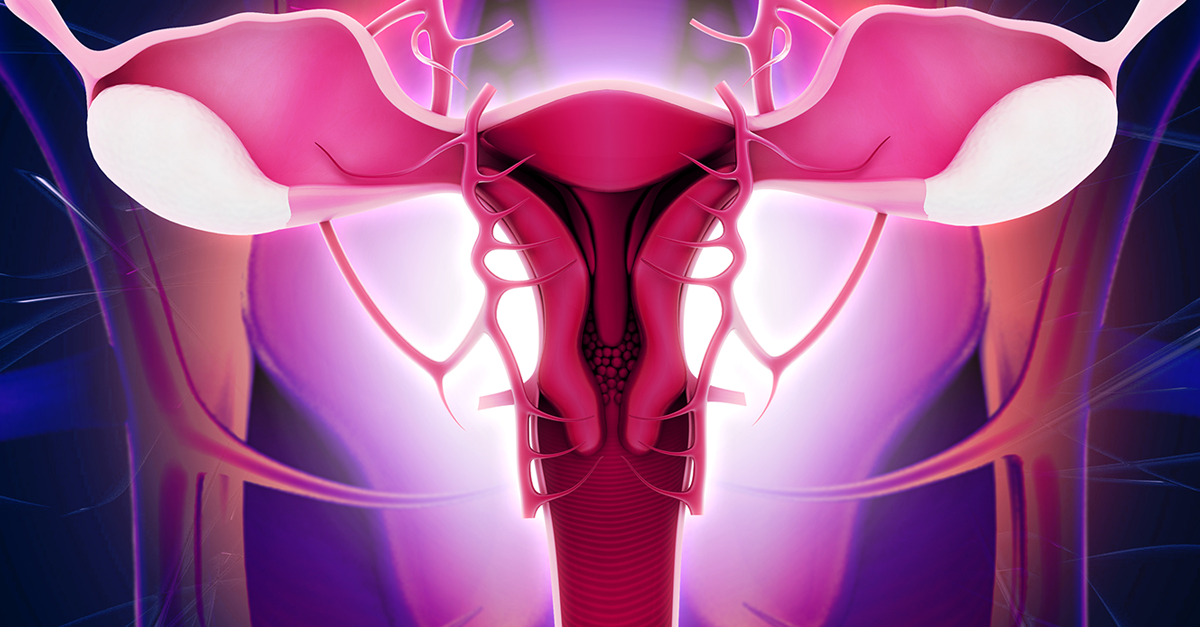
Gynecologic cancers do not get the kind of public attention other cancer types do. September is Gynecologic Cancer Month, but you’re unlikely to see many purple ribbons, fundraisers or walks to raise awareness for the cause. Compared to breast cancer and its pink takeover during its awareness month in October, gynecologic cancers—cervical, ovarian, uterine (endometrial), vaginal and vulvar— are much lesser known.
Different symptoms and treatments
And yet, more than 100,000 women will be diagnosed with gynecologic cancers in 2017, according to the American Cancer Society. Endometrial cancer is the most common cancer of the female reproductive system, but many women are not familiar with the risk factors or symptoms of endometrial cancer. Here’s one fact that leads to confusion, for example: Because the endometrium is part of the uterus, it’s sometimes referred to as endometrial cancer and often called uterine cancer. Endometrial and uterine cancer are the same disease. But uterine sarcoma is an entirely different entity that has very different symptoms and treatments from uterine cancer.
When cancer forms in the lining of the uterus, it is referred to as endometrial cancer. “This cancer is what is known as an adenocarcinoma, because it forms in mucus-secreting glands,” says Dr. Justin Chura Chief of Surgery & Director of Gynecologic Oncology at our hospital in Philadelphia. “The majority of cancers of the uterus are endometrial carcinomas.”
Uterine sarcoma, meanwhile, forms in the uterine muscle. “Cancers that form in the muscle, connective tissue or bone are considered sarcomas,” says Dr. Chura. “Sarcomas tend to be rare, so getting a second opinion with an expert is important.”
Risk factors for endometrial cancer and uterine sarcoma differ, too. The main risk factors for uterine sarcoma include:
- Radiation therapy to the pelvic area: Cancers that develop from this type of radiation exposure typically occur five to 25 years after treatment.
- Race: Uterine sarcomas are about twice as common in African-American women as they are in white or Asian women.
- History of retinoblastoma: Women who have had this type of eye cancer have a higher risk of uterine sarcoma.'
Common risk factors
Common risk factors for endometrial cancer include:
- Age: Most women diagnosed with endometrial cancer are over age 50 and have experienced menopause.
- Obesity: Because fat tissues tend to produce higher levels of estrogen, being overweight increases the risk of endometrial cancer.
- High number of menstrual cycles: Menstruating exposes the endometrium to estrogen, which builds up over time, so the longer the exposure, the higher the risk of the hormone triggering an overgrowth of abnormal cells. Women who started their periods before age 12 and those who went through menopause after age 50 are at higher risk of this disease. Likewise, late menopause may not lead to a higher risk in women whose periods began later in their teens.
- No prior pregnancies: Women who have never been pregnant have a higher risk of endometrial cancer than women who have had at least one pregnancy.
- Genetics: Lynch syndrome, also known as hereditary nonpolyposis colorectal cancer, increases the risk of endometrial cancer. Women who inherit mutations in the BRCA genes or the PTEN gene may also be at an increased risk.
- Estrogen replacement therapy: After menopause, replacing estrogen without increasing progesterone levels may increase a woman’s risk of developing endometrial cancer.
- Tamoxifen: Women who are treated with this breast cancer drug have an increased risk for endometrial cancer.
| Common endometrial cancer symptoms include: |
Common uterine sarcoma symptoms include: |
|---|---|
| Bleeding not related to menstruation | Unusual vaginal bleeding or spotting |
| Postmenopausal bleeding | Postmenopausal bleeding |
| Unusual vaginal discharge without any visible blood | Unusual vaginal discharge without any visible blood |
| Difficult or painful urination | Frequent urination |
| Pain during intercourse | Pain in the abdomen |
| Pain and/or mass in the pelvic area | A mass (lump or growth) in the vagina |
| Unintentional weight loss | Feeling full at all times |
While these and other symptoms do not necessarily indicate cancers of the uterus, you should consult your doctor for an exam if you experience them, since many types of uterine cancer are highly treatable if diagnosed early. Treatment options for endometrial cancer and uterine sarcoma are also similar. “The initial treatment for both endometrial cancer and uterine sarcoma is usually surgery,” says Dr. Chura. “After surgery, the next step in therapy is based on the patient’s stage. Most patients with uterine cancer are stage 1 and do not require further treatment other than surgery. Uterine sarcomas, because of their aggressive nature, are often treated with chemotherapy after surgery. The type of chemotherapy depends upon the type of uterine sarcoma. Some uterine sarcomas may also be treated with hormonal therapy.”



